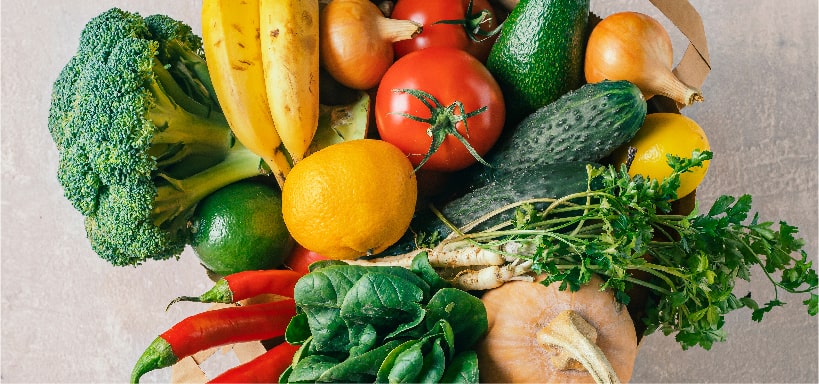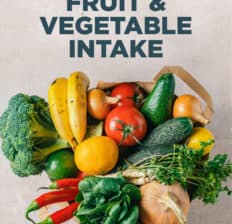This Dr. Axe content is medically reviewed or fact checked to ensure factually accurate information.
With strict editorial sourcing guidelines, we only link to academic research institutions, reputable media sites and, when research is available, medically peer-reviewed studies. Note that the numbers in parentheses (1, 2, etc.) are clickable links to these studies.
The information in our articles is NOT intended to replace a one-on-one relationship with a qualified health care professional and is not intended as medical advice.
This article is based on scientific evidence, written by experts and fact checked by our trained editorial staff. Note that the numbers in parentheses (1, 2, etc.) are clickable links to medically peer-reviewed studies.
Our team includes licensed nutritionists and dietitians, certified health education specialists, as well as certified strength and conditioning specialists, personal trainers and corrective exercise specialists. Our team aims to be not only thorough with its research, but also objective and unbiased.
The information in our articles is NOT intended to replace a one-on-one relationship with a qualified health care professional and is not intended as medical advice.
CDC: Only 1 in 10 Adults Meets Daily Fruit and Vegetable Intake
April 5, 2022

Is it five fruits and five veggies a day that we’re supposed to aim for? Exactly how many fruits and vegetables should we eat every day?
According to most health authorities, such as the USDA, adults need between 1.5 to two cups of fruits and two to three cups of vegetables daily. (Men require a bit more because typically their calorie intake in higher.) Unfortunately, the vast majority of Americans, around 90%, are not meeting these targets for daily fruit and vegetable intake.
As covered more below, men, young adults and people with lower incomes are most likely to miss out on key nutrients provided by fruits and veggies. Let’s look at why this is problematic, plus easy ways to add more produce into your diet.
Study: Only 1 in 10 Adults Meets Daily Fruit and Vegetable Intake Recommendations
In January 2022, the Centers for Disease Control and Prevention (CDC) reported that a 2019 survey found that up to nine out of 10 people aren’t eating enough fruits and veggies. Data was based on the 2019 Behavioral Risk Factor Surveillance System survey, which included dietary data from over 290,000 adults aged 18 years or older living in the United States.
The survey found:
- Only 12.3% of adults reported meeting daily fruit requirements. This means roughly 88% are not eating enough fruit each day.
- Only 10% of adults said they met vegetable intake recommendations on a regular basis, meaning 90% could afford to up their vegetable intake.
Hispanic adults and those over 51 years old were found to consume the most produce (about 12% to 16% met recommendations), while males and adults with low incomes were found to consume the least (between 7% and 10% consumed enough produce daily).
What It Means to Miss the RDA
It’s important that a healthy diet includes vegetables and fruits for a number of reasons, including because the food groups support:
- Healthy immune function, thanks to their supply of fiber, probiotics, antioxidants, and essential vitamins and minerals.
- Prevention of obesity, metabolic syndrome, type 2 diabetes and cardiovascular diseases.
- Protection against some types of cancers, due to their rich content of protective phytonutrients.
Fruit vs. Vegetables: How Do They Differ, and Why Do We Need Both?
In terms of being the most “nutrient dense,” vegetables really shine considering they are low in calories, carbs and sugar but high in antioxidants, fiber, vitamins and minerals. This is especially true of superfoods like kale and other greens, broccoli, peppers, asparagus, onions, etc.
Fruits still provide plenty of valuable nutrients, especially things like fiber, vitamin C, vitamin A, potassium and flavonoid antioxidants. The caveat is that fruit contains natural sugar and more calories, so less is needed compared to vegetables.
What Fruits and Vegetables Should You Eat Every Day?
While basically all fruits and veggies make great additions to your diet, some of the most nutrient-dense types include:
- All sorts of leafy greens
- Cruciferous veggies like broccoli, cauliflower, kale, cabbage and Brussels sprouts
- Onions, leeks, chives, scallions
- Garlic
- Mushrooms
- Bell peppers
- Asparagus
- All types of berries
- Oranges, grapefruit and other citrus fruits
- Kiwi
- Pineapple
- Mango
- Papaya
How to Add More Fruit/Veggies to Your Diet
How do I eat five servings of vegetables a day? It’s easiest to space your veggie intake out, meaning you eat some with each of your main meals each day.
You might have some greens with eggs in the morning or a green smoothie for breakfast, followed by a big salad for lunch, and sautéed veggies or veggie soup with dinner.
Fruit is generally easier to eat because you can eat it raw, it’s more portable and most people find it to be tastier. Studies show that fruit makes its way into many people’s breakfasts but then isn’t necessarily a part of their other meals.
Try having more fruit as snacks, chopped and added to salads, or in healthy desserts.
For many Americans, the price of produce can be an obstacle standing in the way of eating enough of it. You can save money on produce by:
- Buying frozen fruits and veggies.
- Choosing produce in season, which tends to be cheaper.
- Buying at farmers markets, which sometimes feature less expensive seasonal items.
- Shopping at discount stores that don’t sell big brand names.
Here are ideas to help you meet daily fruit and vegetable intake recommendations:
- Make a daily, produce-packed green smoothie a part of your day. Try one of these 34 Green Smoothie Recipes.
- Fill up on salad topped with different cooked or raw veggies, like this Harvest Mason Jar Salad.
- Eat more plant-based protein in place of meat, such as by subbing in mushrooms or cauliflower for beef in tacos.
- Add cooked veggies to things like fajitas, stews, frittatas and rice or pasta dishes.
- Enjoy a yogurt bowl or açaí bowl filled with a few of your favorite fruits, such as kiwi and blueberries.
Conclusion
- Most Americans (about 90%) do not meet requirements for daily fruit and vegetable intake.
- This leads to low intake of essential nutrients and can increase the risk for health problems, such as weight gain, obesity, heart disease, diabetes and some forms of cancer.
- Aim to eat between 1.5 to two cups of fruits and two to three cups of vegetables daily. Add more produce to your meals by subbing out meat for veggies, making smoothies and salads, and enjoying veggies in soups, stews and other dishes.









